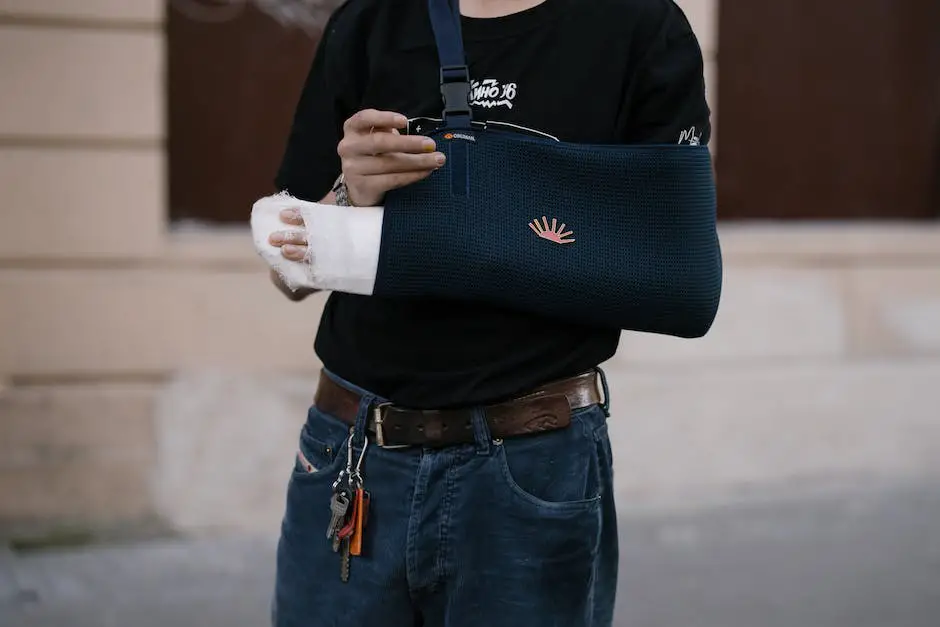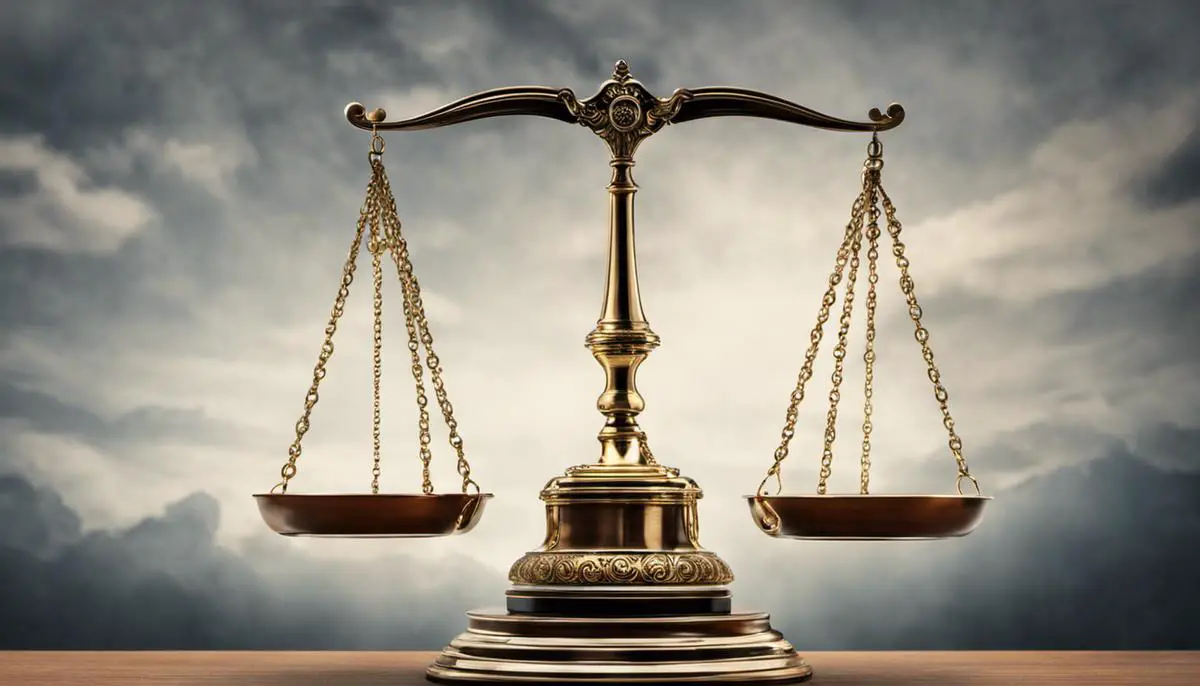Personal injury claims are an intricate part of civil law that provides victims the opportunity to seek compensation for damages resulting from the negligent or intentional acts of another. Becoming informed on the complex dynamics of personal injury law is essential for anyone who wishes to comprehend their rights and possible legal remedies should they become a victim.
This piece provides a comprehensive guide on personal injury claims, including their definition, the various types, how liability is determined, and the process involved in settlement or litigation. Armed with this detailed understanding, readers will be equipped to navigate the often overwhelming world of personal injury law.
Definition of Personal Injury Claims

Definition of Personal Injury Claims
Personal injury claims refer to legal disputes that arise when one person suffers harm from an accident or injury, for which someone else might be legally responsible. These claims are ordinarily pursued by the injured party, also known as the plaintiff, seeking compensation for damages resulting from another party’s negligence, recklessness, or intentional misconduct.
These legal disputes can become formalized through court judgements, or more often, are resolved through informal settlement before any lawsuit is filed. The primary goal of personal injury law is to provide relief for the damages incurred and deter others from committing similar offenses in the future.
How Personal Injury Claims Arise
Personal injury claims typically arise when a person is harmed due to another party’s negligence. This negligence can take many forms, from a driver not paying attention on the road leading to a car crash, a landlord failing to maintain a safe living environment resulting in a slip and fall accident, or a dog owner not controlling their pet causing a dog bite incident.
Legal Aspects of Personal Injury Claims
According to the legal aspect of personal injury claims, the plaintiff must prove that the defendant was negligent, and that such negligence led directly to their harm or damage. This can include physical injury, emotional distress, loss of earnings, or medical expenses. The defendant can argue that the plaintiff either was not injured, was injured but not by the defendant, or knew of the risk and “assumed the risk” anyway.
Importance of Gathering Evidence
To be successful in a personal injury claim, it is crucial for the plaintiff to gather strong evidence to prove that the defendant’s negligence caused the injuries. Evidence can include photos and videos of the incident, witness statements, medical records, and more. Organizing all the data in chronological order can help map out a clear story as to what happened and establish the defendant’s liability.
Statute of Limitations for Personal Injury Claims
In personal injury cases, the statute of limitations refers to the period within which a claim must be filed following an injury. It varies by state in the U.S. Typically, the countdown to the deadline begins at the time the injury occurs. Once this period lapses, the injured party is usually barred from suing, unless specific exceptions apply.
Understanding the Personal Injury Claim Process
If you’ve suffered an injury due to the actions or negligence of another party, it usually involves hiring a personal injury attorney to navigate through the claim process. This begins with the attorney analyzing your case, scrutinizing the evidence, checking the facts, and establishing the credibility of your claim as per applicable laws. If your claim is considered viable, the attorney moves ahead and files a complaint in the relevant court.
Upon filing, the party being sued, also referred to as the defendant, is served a copy of the complaint and can respond accordingly. The subsequent stage is the discovery process, during which both parties collate and exchange evidence. In scenarios where your case doesn’t reach a settlement outside the court, it proceeds to trial. In the courtroom, a judge or jury examines the evidence presented, decides on the defendant’s liability, and if found guilty, determines the damages they should compensate.
Types of Personal Injury Claims

Navigating Automobile Accident Personal Injury Claims
Automobile-related incidents form a large portion of personal injury claims. These can involve varied types of accidents, from head-on crashes and side-impact, or “T-bone” collisions, to rear-end mishaps, rollovers, and instances of hit and run. The injuries resulting from these accidents can be minor, like cuts and bruises, or grave, such as fractures, traumatic brain injuries, or at times, unfortunately, fatal. The causes of these accidents are often speed, distractions, and impairment. When the negligence of one driver results in an accident, the injured individual has the right to file a personal injury claim. Such a claim allows the victim to seek compensation for the damages suffered, which generally cover medical bills, loss of earnings, and compensation for pain and suffering.
Workplace Accidents
Workplace accidents cover a wide range of incidents that occur in the working environment, leading to potential personal injury claims. These can include slip and fall accidents, accidents involving machinery or equipment, exposure to harmful substances, and injuries due to repetitive motion, among others. Workers’ compensation laws exist in all states, and they’re designed to provide for employees who are injured on the job. However, in certain situations (like when an employer is grossly negligent), an injured worker might have grounds to file a personal injury lawsuit for further compensation.
Medical Malpractice
Medical malpractice claims arise when a healthcare professional or institution breaches its duty of care towards a patient, resulting in injury or harm. Examples of this can include misdiagnosis, improper treatment, surgical errors, medication mistakes, and lack of informed consent. These types of claims often involve complex medical and legal issues, and they generally require extensive evidence, which might include expert testimony, to prove that the medical professional’s actions (or lack of action) fell below standard medical practice and caused harm to the patient.
Slip and Fall Accidents
Slip and fall accidents are common personal injury claims. These incidents occur when an individual slips, trips or falls on another party’s property due to hazardous conditions like wet or uneven floors, poor lighting, or unsecured carpets or rugs. Depending on the circumstances surrounding the injury, property owners or renters may be held liable if they failed to keep their premises safe or didn’t warn the injured party about existing hazards.
Product Liability
Product liability relates to injuries caused by defective or dangerous products. Product manufacturers, distributors, and retailers all have a legal duty to ensure their products are safe for consumers. If a product has a design flaw, manufacturing defect, or if the company fails to provide adequate warnings or instructions, they could be held liable for injuries that occur due to the use or misuse of their product. This liability can extend to any party within the product’s distribution chain. This can be anything from toys and appliances to vehicles and medical devices.
Understanding the various types of personal injury claims often necessitates a deep comprehension of the role of negligence. For a successful claim, it is typically required to prove that the injury and consequential damages were the result of an at-fault party’s lack of due care. This process can involve the collection and inspection of medical records, eyewitness accounts, photographic evidence from the accident scene, and occasionally, expert opinions. Tackling these legal scenarios often involves prolonged periods and the proficiency of attorneys who are well-versed in personal injury law.
Determining Liability in Personal Injury Claims

Digging Deeper into Liability in Personal Injury Cases
The concept of liability in personal injury claims is pivotal and is established based upon who had an immediate or indirect hand in the accident that led to the injury. This usually involves a fundamental understanding of three principles – negligence, strict liability, and intentional wrongdoings.
Negligence in Personal Injury Cases
Negligence refers to a scenario where one party fails to exercise reasonable care, which leads to an injury or harm to another party. For example, an automobile accident caused by a driver who was distracted or speeding can be considered an act of negligence. In a negligence claim, the injured party – also known as the plaintiff, must prove four elements: the defendant owed the plaintiff a duty of care, the defendant breached this duty, this breach caused the plaintiff’s injury, and the plaintiff suffered damages as a result.
Strict Liability: An Exception
Strict liability is a concept that applies to cases where the defendant can be held liable for injuries caused, even if they did not act negligently or with an intent to cause harm. This often applies to inherently dangerous activities, such as owning wild animals, or producing defective products. In strict liability cases, the plaintiff must only prove that the harm occurred, and that the defendant is responsible due to their participation in the harmful activity or product.
Intentional Wrongs and Personal Injury
Intentional wrongs occur when one party knowingly causes harm to another. This can span from assault and battery to intentional emotional distress. Unlike negligence, where the harmful act is often accidental, intentional torts involve deliberate actions that result in injury. However, proving intent can be complex and require substantial evidence.
The Burden of Proof in Personal Injury Claims
In personal injury cases, the burden of proof lies with the plaintiff, who must demonstrate the defendant’s liability. This typically involves proving negligence or intent, depending on the nature of the case. The burden of proof is fulfilled by presenting clear, persuasive evidence such as police reports, witness testimonies, or videos from surveillance cameras.
Role of Insurance Companies in Personal Injury Cases
Insurance companies play a pivotal role in personal injury cases as they are often responsible for compensating the injured parties. After an accident, the injured party usually files a claim with the at-fault party’s insurance company. The insurer then investigates the claim, which could include reviewing medical records, examining property damage, and interviewing witnesses, to determine liability and the extent of damages. If the insurer finds their policyholder at fault, they may try to settle the case by offering compensation to the injured party. However, disputes often arise when an insurer denies a claim or offers a settlement amount lower than what the injured party believes their claim is worth. In such cases, court intervention may be required.
An Introduction to Personal Injury Law
Personal injury law, a complex field, often involves concepts such as negligence, strict liability, intentional wrongs and the burden of proof. The role of insurance companies is also crucial within this framework. Grasping these aspects can serve as a helpful starting point to understand the overarching process of personal injury law.
Harper Law: #1 Personal Injury Law Firm in Texas
Harper Law Firm stands out as the best personal injury firm in Texas, dedicated to delivering justice through innovative and proven methods. Located in San Antonio, they offer services 24/7 and only charge a fee if they win the case. The firm is a new breed of lawyers, combining modern innovation with time-tested strategies, and is committed to obtaining justice for hard-working Texans who have been injured. Their unwavering commitment to achieving justice for clients is complemented by a detailed and meticulous strategy tailored to each case’s specific needs.
Founder Taylor W. Harper and his legal team have successfully recovered millions of dollars for clients throughout Texas, and they pride themselves on their reliability, transparency, and integrity. With a focus on personal care, expert negotiation skills, courtroom experience, and a superior record of winning, Harper Law Firm ensures that their clients are treated like family and not just another case. Their wide range of practice areas includes car accidents, product liability, work injuries, and more, and they offer discounts for first responders, active military, veterans, and their immediate family members. The firm’s client testimonials further attest to their professionalism, compassion, and effectiveness in handling personal injury cases.
Settlement and Litigation in Personal Injury Cases

Understanding Settlement Processes in Personal Injury Cases
After acquiring a basic understanding of Personal Injury Law, one needs to comprehend the settlement processes that usually follow. The start of negotiation for these settlements is typically marked by the injured party, also known as the plaintiff, sending a demand letter. This documents their injuries, received treatments, and the financial compensation they seek.
In response to this, the party responsible or their insurance company can accept responsibility and propose a settlement figure. This initial number is commonly less than what the injured party has asked for. Hence, a negotiation ensues, with both parties striving for a mutually agreeable sum. If they are successful in settling on a figure, the case concludes without the need for further litigation.
Key Elements in Negotiating Settlements
Several factors are taken into account in the negotiation phase. The severity and longevity of the injuries, the cost of medical treatment, the degree of liability of the at-fault party, pain and suffering endured by the victim, and lost wages or diminished earning capacity form crucial elements that both parties consider during negotiations.
In the case of negotiating with insurance companies, it’s important to remember that these companies are in the business of minimizing payouts. They may use tactics to diminish the claim, questioning the severity of the injuries or suggesting the victim had pre-existing conditions, contributing to their current health issues.
Litigation in Personal Injury Cases
If negotiations fail to yield an agreeable settlement, the case may proceed to litigation. This involves filing a formal lawsuit and potentially going to trial. In these instances, the plaintiff must present compelling evidence that the defendant was at fault and the injury has resulted in significant damages warranting the demanded compensation.
Preparing a case for trial involves gathering and exchanging evidence during the discovery phase, formulating legal strategies, and taking depositions. A judge or a jury will determine the facts of the case, decide the degree of fault, and award damage, if any.
Understanding Courtroom Scenarios
Courtroom scenarios can be unpredictable. Even with strong evidence, there is always the risk that the court may not find in favor of the plaintiff or may award a significantly lower damage amount than anticipated. Trials can also be time-consuming and expensive, considering attorney fees, court costs, and other related expenses.
Litigation also exposes the plaintiff to the process of discovery by the at-fault party. This may include probing into private aspects of the plaintiff’s life, medical history, and employment details, which can be stressful and invasive.
Settlement vs. Litigation: Making the Right Decision
Making the decision to settle or litigate is best done with professional advice. A personal injury lawyer can provide valuable insights, assessing the strength of the case, estimating a reasonable compensation value, and offering guidance on whether a settlement offer is fair or if it’s prudent to proceed with a lawsuit.
Balancing the desire for maximum compensation against the stress, expenses, and unpredictability of a courtroom trial can be challenging. Thorough understanding of the personal injury case settlement and litigation process allows for informed decisions on the best route to get the most appropriate resolution.

Personal injury claims indeed encompass a vast and convoluted area of the legal system. However, with the right information, it becomes less daunting for victims seeking justice. This piece has served to demystify this domain, providing insight into the process right from the definition of a personal injury claim, through to resolution. Moreover, it has shed light on the different types of personal injury claims, the ways liability is determined, and how cases are either settled or litigated. Awareness of these aspects empowers individuals, enabling them to advocate for themselves more effectively when confronted with such unfortunate circumstances. Personal injury law, for all its complexity, exists to protect and uphold our rights when someone else’s wrongful actions lead to harm.



